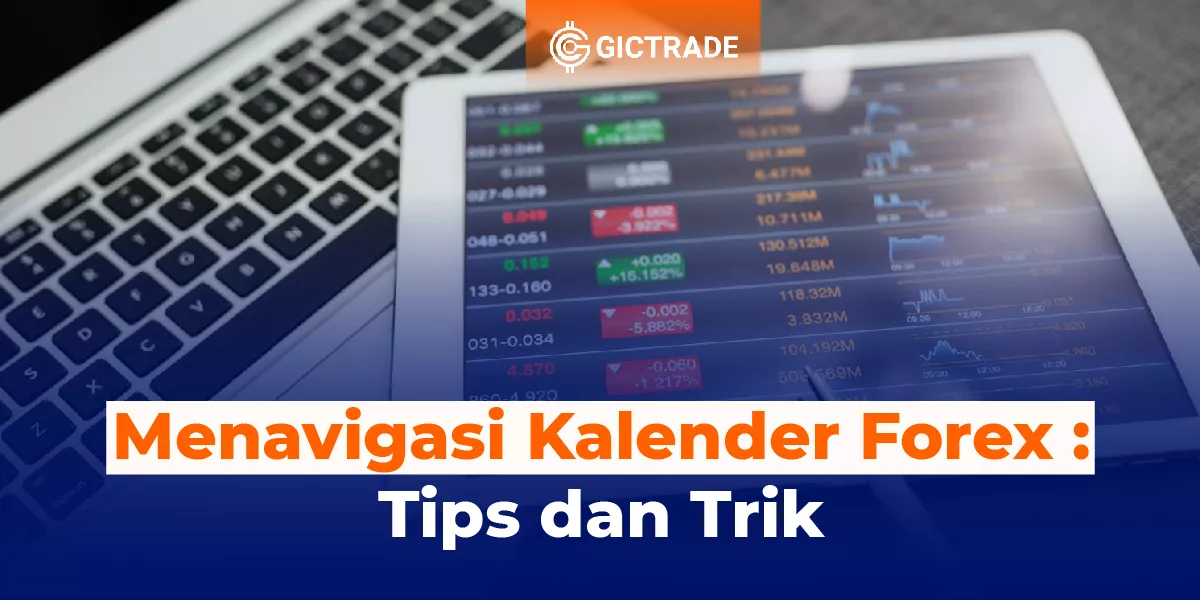Definition of Trading Plan
A trading plan is a plan to manage trading transactions. This planning will be useful for organizing what steps need to be taken when trading. You can use this trading plan to trade anything, ranging from commodities, gold, stocks, forex, and others. A trading plan is a must for those of you who are indeed disciplined in this business. A trading plan will play an important role according to your plan, so that transactions will be directed, have targets, and be more disciplined later. A trader will also be responsible for himself or herself with such trading. If the trading results are not as expected or the direction of the market price movement is contrary to the prediction, then traders can immediately take the best actions and steps on the trading account without having to hesitate and panic. The more you force yourself to enter the market with the analysis of so many technical variables and fundamental data in the market, the more inconsistent the results of your trading account will be. This is a psychological hurdle that a trader must overcome.Trading Plan Function
As mentioned a little earlier, the function of making a trading plan itself is also many. For more details, you can find out through the article below.- To set the pace at the time of the trade. Collapsed manufacturing is usually designed based on experience, using logical models and methodologies according to the goals to be achieved.
- Making traders more disciplined. With a good and objective trading plan, a trader has practiced to be disciplined in accordance with the rules that have been set in the plan.
- With a trading plan, the transactions you make will become more directional because of the focus that has been set on a series of your trading plans.
- Another function of this trading plan is to help you not to get confused in dealing with changes in market prices. Traders can read transaction opportunities well if the trading plan is well planned.
Advantages of Making a Trading Plan
After knowing what tips for making a trading plan are, it's a good idea for you to know what profits are generated when making a trading plan itself. These advantages are not much different from the function of the trading plan itself, namely, this trading plan can help you stay focused on planning and executing trading strategies. For a trader, a trading plan is necessary to obtain consistent trading results. These consistent trading results become more important than fantastic but inconsistent results. In addition, you can also regularly learn about fundamental and technical analysis. With this, you will understand more about market conditions and what strategies you need to apply in trading even when creating a trading plan.Tips for Creating a Trading Plan for Stocks
There is a tip that you can apply if you want to make a trading plan of your own. These tips will help you to determine steps in accordance with the existing rules and methodologies. These tips are:Determining the Trading Timeframe
The first thing you can do is determine the trading timeframe that you will apply. Whether the trade is daily, weekly, or a scalping trader. If you choose to scalp and trade weekly, this becomes not a concern as long as you separate your funds. For beginners, it is recommended to trade daily to weekly such as about 2 days to 1 week. The goal is so that you can learn more about how to analyze technicals and also study market movements. With this, you will become more sensitive to the existing market.Capital Planning
With this capital planning and capital management, you can minimize existing losses. For those of you who are beginners, the recommended capital is in the range of IDR 1,000,000-IDR 1,500,000 with no more than that figure. After that, you can plan to the maximum by having 3 portfolios. Keep in mind to never spend 100% of the funds you have to buy stocks.Choosing a Portfolio
The next tip is, you can already choose a portfolio. You can prepare the portfolio you want, also try to choose a portfolio from LQ45 stocks. You must have preferred stocks that are used for trading. The goal is, so that you are not easily trapped by stocks whose movements are illiquid or not easily liquid.Choosing an Indicator
After that, you can also prepare indicators that are suitable for you. Every indicator used by someone else, later it may not be suitable for you. Therefore, you must start with trial and error to try all the existing indicators, which are suitable, suitable, and suitable for you to make a trade.Determining Take Profit and Stop Loss
Next is to determine the take profit and also the stop loss. When buying stocks, you must already know what profit and when to make a stop loss. Because of this, you can minimize the losses before the capital you have runs out.Discipline and Consistency
And the last one is discipline and consistency. This part is the most difficult part to do and apply for some people. What is called discipline and consistency is, if you buy stocks, you will set a take profit of 5%, then the price suddenly rises by 5% so you have to take profit. This is what is called discipline and consistency. Set in accordance with the initial plan by not being greedy at the time of trading.Tips for Creating a Trading Plan for Forex
After knowing how to make a trading plan to trade stocks, this time we will learn how to do tips to make a trading plan for forex. Tips that you can apply are:- First, you have to determine the strategy for entry. You can take the best way or technique from your own experience by applying various entry methods to various market conditions. For example, if you choose a Pin Bar reversal on a trending market condition (for the Price Action strategy) with the Moving Average supporting indicator, then you can convince yourself that this condition is the best and most accurate condition for entry on trending market conditions when compared to other methods.
- Next is to determine the risk/reward ratio. You must apply this Risk Management scenario to every position you will take. Also make sure you have a good understanding of position sizing which is the most important part in determining risk.
- Then you can determine the position size according to the stop loss target. In making a trading plan, you must always remember that the position size can change according to the stop loss risk per trade that you have determined. The risk per trade should be determined first before setting a stop loss level.
- Next, you have to determine a strategy for exit and take profit. The exit target should also be determined before entry, according to the reward that you have agreed with yourself according to the initial trading plan. You should not specify an exit level while trading is in progress. Because the usual emotions tend to change and will be involved when trading without an exit target. We will be more objective in determining the profit target when we do not have a position.
- The last step is to make a journal and notes for evaluation. For each position that has been closed, both profit and loss, you should be given a note to evaluate the quality of the strategy and plan that you have made. That way, you will be more guided to take steps forward.
Problems Faced in Trading
Even though you have made a plan that is in order, it is possible that later you will face a problem in the trading you do. Traders not only need to understand what a trading plan is, but also about the various problems that you may face. There are various possibilities that you can face when trading, especially for trading stocks. The problem that you are likely to face is when you are buying, but the price can go up. The next possibility can happen the other way around, namely when your stock sells, but it turns out that the price goes down. Traders must certainly do some planning to anticipate this. There is another problem that you may face in stock trading, namely when you have made a lot of profit and decided to sell it. However, it turns out that the stock price has soared with what you should be able to get more profits.Factors Causing Difficulty in Following a Trading Plan
There is a factor that makes it difficult for a person to follow a trading plan that they have created on their own. If you are one of those who have difficulty following your trading plan, you can find out the reasons below. So that it does not continue and cause unplanned losses, or even overtrading, then you can try to eliminate these factors.Trading with a Bad Ego
Professional traders must have been well prepared before entering the market. This includes planning when to enter the market, what triggers to enter the market, which price level is important, and others. On the other hand, most beginner traders are still familiar with this kind of planning. In fact, many beginner traders enter the market without careful preparation, leading to trading by relying on emotions.
One example of trading with emotions is when you open a buy order and you are currently in a profit position because the price moves up, but then the price moves down so that your position turns into a loss. If you are not prepared to face this high volatility, you may panic when you are losing and immediately act impulsively by closing your order in a loss, or cut loss.
In fact, not long after that, the price can move up again to a very profitable price level, which makes you regret by hurriedly closing your order. Another example of trading with emotions is when you have set a stop loss for your sell transaction, but it turns out that your prediction is missed with the price moving up to close to the stop loss level.
You also try hard to avoid losses, so you shift the stop loss level to a higher price several times. This situation can make you profitable if the price manages to fall again. However, if the price continues to rise, then you will actually experience losses that far exceed your tolerance limit. Therefore, it is very important to set a stop loss according to your tolerance limits and trading strategy before placing an order in the market. With this stop loss, you can still tolerate losses to a certain extent, so you don't rashly closing an order when there is a floating loss, or a loss on an open order.
Less than Optimal Trading Plan
If you have been disciplined in following the trading plan that you have made, never been trapped in an emotional trading decision situation, but the results are still unsatisfactory, then it could be that the problem you are facing is the trading plan you have made. Because it could be that the trading plan is not optimal in its creation and implementation. You can check it again, whether the trading plan you have has all the components complete or not.
The things that must be included in the trading plan are the amount of capital, the risk limit per transaction, the target profit per transaction, and the product you will trade. Then you also need to determine the number of lots you will trade, the entry level or entry price, as well as the stop loss and also take profit according to your limit and target. Also make sure about your risk limit in accordance with the tolerance you have set by setting a reasonable profit target.
You can use the Risk to Reward Ratio to determine these two components. You should use an RRR of at least 1:2 which means the target profit is twice the risk limit, so that you can get a profit even though your winning rate tends to be low. After knowing everything about the trading plan, you can apply this to make transactions in the future.
By creating a trading plan that is in accordance with your tolerance limits and personal targets, it will be easier for you to instill discipline in trading, so that you can achieve better profit potential. Thus the discussion from GICTrade regarding the explanation of "Trading Plan, Tips for Making a Stock and Forex Trading Plan". You can also find out other information about forex, stocks, and other finances, such as "Non Fungible Token, New Trend of Digital Asset Transactions only in the GIC Journal. Also make sure you deepen your forex knowledge at GICTrade, via the scalping ebook, and also NFP live trading.
 Last:
Last: 







